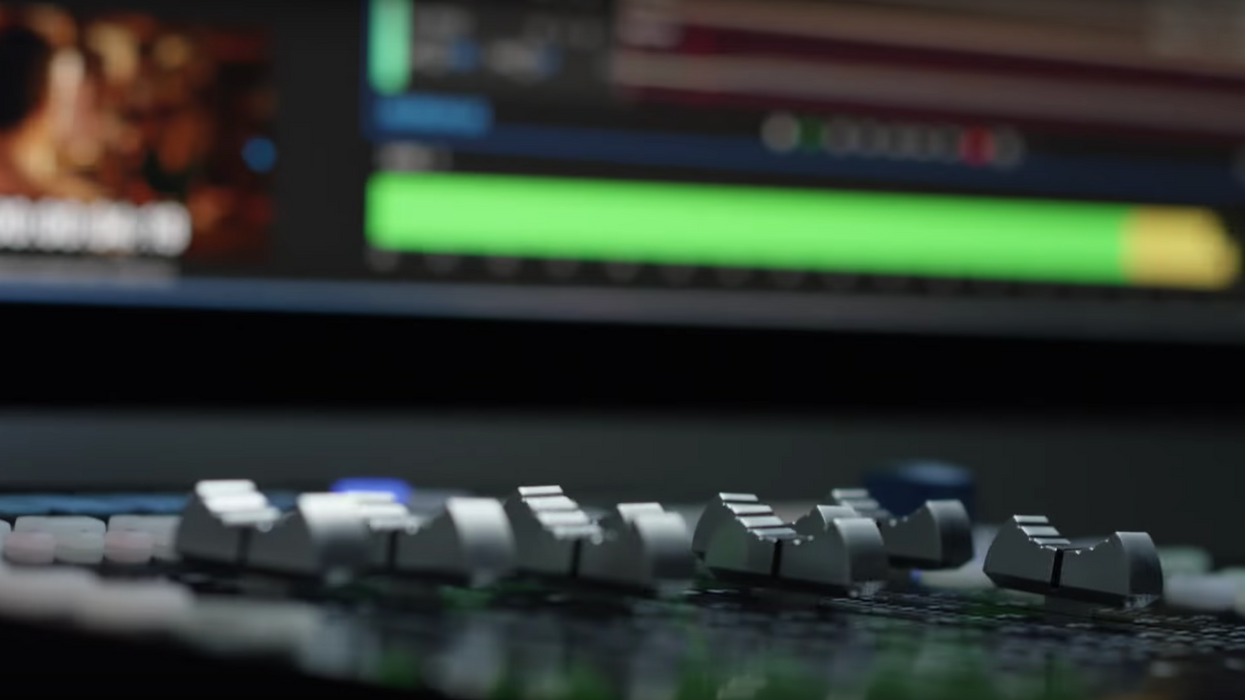Dive into Premiere Pro: Create Pro-Quality Audio Without Ever Leaving Your Timeline
Adobe has turned Premiere Pro and Audition into a true power couple.

Filmmaking is thought of primarily as a visual medium, but sound and audio play a pivotal role in truly bringing those visuals to life. If you're an editor, you most likely understand the frustrations of trying to work with both of these components simultaneously in a way that is not only efficient but effective at giving you more room to create. Adobe addresses this in a big way by integrating the powerful controls of Audition, its flagship digital audio workstation, right into Premiere Pro with the Essential Sound Panel, making robust, professional features accessible to users new to audio workflows.
Adobe's Product Manager for Audio, Durin Gleaves, filled us in on all of the exciting ways editors can use Premiere Pro to design their most dynamic and professional audio yet.
"For new users, it gives that professional sound automatically, simplifying the most common audio tasks."
Essential Sound Panel in Premiere Pro
The all-in-one Essential Sound Panel gave Adobe Audition users a robust toolset, but Adobe made it even easier for film and video editors to work with sound and audio by making it accessible right inside Premiere Pro. Editors can now unify volume levels, repair sound, improve clarity, add special effects, and save presets without ever having to leave their video timelines in Premiere Pro. Not only that, but Adobe has added many powerful new tools and workflows that will make editing audio more efficient and dynamic, including auto-ducking, timecode overlays, Mackie HUI support, and improvements on multitrack clips that allow users to maintain clip Z-order and apply symmetrical clip fades.
The Essential Sound Panel allows users to select the audio type they want to work on, including dialogue, music, sound effects, and ambiance, and are given unique effect options and presets tailored for that specific selection. Furthermore, any adjustments made to audio clips in Premiere Pro appear when sent to Audition for additional editing without any loss of quality, giving users a much more streamlined and powerful editing experience.
Gleaves says, "For new users, it gives that professional sound automatically, simplifying the most common audio tasks." He adds, "We've taken the experience gained from Lumetri in Premiere Pro and put sound into a workflow-driven panel that integrates well with the native Premiere Pro timeline." This is great for novice users because it allows them to access effects and audio tools, like compression, dynamic EQ, reverb, and other tools that could have been perceived as intimidating.
Auto-ducking
One of the most exciting tools included in the Essential Sound Panel is auto-ducking, which automatically lowers the volume of music when dialogue, vocals, sound effects, or any other type of audio you select in the Essential Sound Panel. Users can utilize a wide set of options to duck their music against target audio types, including "Sensitivity", which adjusts the threshold of the target clip where the music clip starts to duck, "Reduce By", which sets the amount of attenuation of the music clip, "Fades", which sets the ducking speed, "Monitor Clip Changes", which automatically updates ducking settings any time you make an edit to a clip, and "Reanalyze Clips", which triggers ducking manually if Monitor Clip Changes is disabled.
Auto-ducking leverages the advanced algorithms of Adobe Sensei to speed up this notoriously tedious and time-consuming process. You no longer need to adjust your audio keyframes one by one, because auto-ducking will do all of the hard work for you. As Gleaves puts it, "Auto-ducking is big. We built this feature that can analyze the loudness of content and automatically generate keyframes. It's dynamic, so once you enable it, it'll adjust itself in the background."
Plays well with others
Adobe has made working in multiple programs like Adobe Premiere, Audition, and Media Encoder more efficient and powerful. Not only do users no longer have to worry about losing essential data or fidelity when transferring projects from one application to the next, but they can rely on Dynamic Link to speed up their workflows.
Lossless interchange
Sending a sequence from Premiere Pro to Audition transfers the full fidelity of users' compositions. If a user wants to send their project to Audition for more advanced edits, all keyframes, effects, Essential Sound settings, markers, and metadata added in Premiere Pro are kept intact.
Dynamic Link
Current Adobe users may know that, in the past, transferring media assets among applications like Adobe Premiere, After Effects, and Media Encoder required work to be rendered and exported in one program before importing it into another, resulting in an inefficient and time-consuming workflow. However, editors can now add dynamic links between programs, allowing them to apply last-minute edits when needed and cut down on disk space all while saving the rendering process for the very end.
Media Encoder Integration
Users can export edited audio from Audition directly to Media Encoder, providing a fully linear workflow that utilizes format presets and audio channel customization without the need to render or wrangling mixdown files. Integration with Media Encoder provides users with powerful export and Destination Publishing options, and open SDK and scripting extensions give users limitless, customizable in-app experiences.












